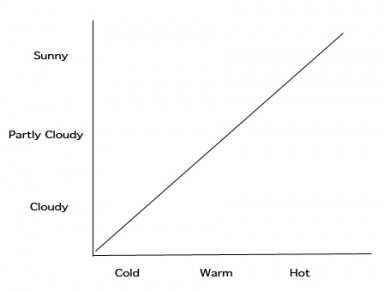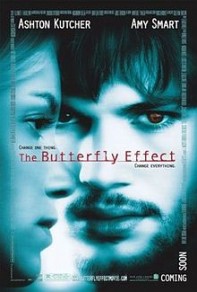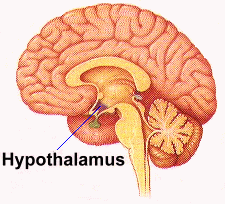You’ve seen or heard it during a game…there’s a big hit or a player sprawled out on the ground and immediately the broadcasters begin speculating on exactly what they hurt and how long the player may be out. From the “magic spray” used in soccer to the “just rub some dirt on it” philosophy behind medical treatments of yesteryear, there are many myths and inconsistencies behind sports medicine and the treatment of injuries.
From slobber-knockers to de-cleaters or getting his bell rung; misconceptions of injuries, particularly head trauma, leads to much misunderstanding of how badly an athlete may be hurt, and what a realistic recovery time for their injury might be.
This is where I come in. My purpose in writing for FishDuck.com is to improve understanding of the psychological and physical stresses placed upon athletes, and to better explain, in layman’s terms, all the factors involved in various sports injuries. This may cover some obligatory background information as needed, but is presented to help educate fans on specific injuries related to athletes.
In addition, we will be looking at why recovery times vary amongst patients, even though the injuries appear to be the same in two or more athletes, and how recovery is unique to each individual. During the season we may dissect specific injuries when/if they occur to players. I hope this will lead to more educated and less opinion-as-fact discussions every time an athlete unfortunately suffers an injury.
What is Sports Medicine?
Sports medicine is a branch of medicine concerned with physical fitness and the treatment, rehabilitation, and prevention of injuries and other disorders related to sports. Knee, leg, back, and shoulder injuries, concussion, stiffness and pain in joints; tendinitis, “tennis elbow,” and dehydration are among the common conditions that may be involved as a result of participating in athletics.
Treatment and prevention may include exercise programs for increasing strength, flexibility, and endurance, physical therapy, fitness tests, advice concerning nutrition and fluid replacement, and use of protective equipment. Surgery may be needed to treat some injuries, and sports medicine is also concerned with the abuse of so-called performance-enhancing drugs (PED’s).
The body, the brain especially, operates in a non-linear manner. We are used to thinking of things in linear ways…one step leads to the next, everything functions the same way every time, and so on. However, the universe, and people in particular, don’t function the same way all the time; and good thing too, because how boring would that be?!?
There are a number of forces working on us all the time, both inside us and from the environment around us, which causes all sorts of interactions that may play out differently among individuals.
For example, one man can get up immediately from a particular hit while another may suffer a severe injury from what appears to be a similar collision.
Are the hits really the same? (angle, force, etc.)
Are the interior interactions the same between the athletes?
What role does genetics, hormones, cognition, conditioning, balance, and psychological makeup play in different athletes?
Or is it all just about bad luck?
To understand the complexity of human functioning is the beginning point to comprehending all that follows thereafter. Every action in the body, or in the environment that impinges upon a person, causes other actions that then change the state of the system.
Consequently, our system is always changing, forever in flux. Some injuries occur when a hit a split-second earlier or later might have left that same player injury-free.
This leads to those moments in games that we’ve all seen. A big hit occurs on a quarterback and he slowly gets up woozy, then takes a knee to settle himself before either getting back to the huddle, or being helped off the field. Or a quarterback takes a brutal shot, and immediately stands up like it was nothing and sprints back to the line for the next play.
In contrast sometimes what appears to be a perfectly normal tackle of little intensity at first glance may lead to the biggest injuries, leaving many observers to ponder what happened. Why does that occur?
It doesn’t take a medical degree to know that after taking a hit like this the quarterback had every right to feel light-headed.
The Weather Analogy
Consider a simple analogy to understand non-linear dynamic theory in a more sophisticated way—by observing the weather.
If 10 people were asked to describe the weather outside, several of them would look around and say “The weather is good,” or “it’s bad outside.” Others might state, “It’s partly cloudy, and kind of windy,” or “it’s foggy and rainy, and those clouds look like a thunderstorm might be coming.” Someone with knowledge of meteorology however might respond with a bit more complex terminology, “Those are cumulus clouds, probably marking the edge of a cold front, with a 75% chance of rain later today.”
Compare these different perspectives to what a professional meteorologist would state looking at the same weather patterns: “It is currently 70° in downtown Portland, the wind is out of the north northwest at 25 miles per hour, with gusts to 35, as an occluded front moves into the valley from the Gulf of Alaska.”
How a person perceives and another reports the weather depends on the level of sophistication, knowledge, and motivation for the subject matter. Specialized knowledge in what defines and determines the weather allows a meteorologist to predict it in more precise terms. This is not to suggest that the average individual’s reports have no value. If going to the beach, knowing that the weather will be “gorgeous today” or “yucky this afternoon” may be all the information needed.
Or consider it on this very basic scale:
 But you wouldn’t want to diagnose a major injury with something as simple as this. Hurt = Bad.
But you wouldn’t want to diagnose a major injury with something as simple as this. Hurt = Bad.
Self-analysis may be useful, but it shouldn’t be confused with scientific understanding. This same perspective should be applied to medical diagnosis, determining issues to complex medical situations that may be loosely understood at first glance, but require much more detailed understanding to fully diagnose, like a meteorologist’s weather report vs. somebody looking out the window.
Systems, like our bodies, are multi-dimensional phenomena, and an irony of complex systems is that they are often easier for naïve observers to identify qualitatively than for specialists to quantify.
A doctor or medical trainer would look to diagnose what exactly UCLA QB Kevin Prince is ailing from following this hit so as to begin treating it, while the common observer can at a glance know that the initial diagnosis is good enough–he got crushed!
Dynamic Systems
Dynamic systems are mathematical models used to describe the time-dependent position of a point in space. For example, a dynamical system could be used to describe the movement of a swinging pendulum. Based on the laws of physics, trajectory, velocity, acceleration, and changes over time.
Think about how long it takes from the time somebody drinks a beer until it effects their blood-alcohol concentration, and the level it remains for each subsequent hour after that alcohol is ingested. The future evolves from the past, past events help determine future ones.
Thus, an injury to an athlete begins well before the point of contact. How the play unfolds, the roles of the various players, the condition of the field, and the state of the athlete’s system help set things up for an injury. Conditioning and the state of the player’s system will help determine how his body will respond to a collision.
If the athlete’s system is not operating properly at that moment, the more likely an injury will occur. If his system is functioning well, the more likely the body will respond more normally. This will allow the athlete to have either much less of an injury, or none at all.
No matter what state their system may be in though, this still hurts…
As we move, sensory information about what the muscles and tendons are doing is sent to the brain. This feedback then allows the brain to issue new instructions to the muscles to continue the movement unabated, or it allows them to behave differently for new conditions (such as anticipation of a collision).
If an athlete is trying to run quickly, the feedback from the muscles and brain back-and-forth is to move the legs as fast as possible while maintaining a straight line. Simple, right?
But what happens when say, a wide receiver is running downfield (straight line) as fast as possible, and then a cornerback bumps them from their intended path? Aside from a flag for pass interference obviously, what’s happening to the receiver’s body?
In mathematics and physics, what is known as chaos theory describes the behavior of certain non-linear dynamical systems that under specific conditions exhibit dynamics that are sensitive to initial conditions (popularly referred to as the butterfly effect – if a butterfly flaps its wings in Brazil, a storm will occur in the Northern hemisphere).
As a result of this sensitivity, the behavior of chaotic systems appears to be random, because of an exponential growth of errors in the initial conditions.
This happens even though these systems are deterministic, in the sense that their future dynamics are well-defined by their initial conditions, and there are no random elements involved.
This behavior is known as deterministic chaos, or simply chaos. Let’s look at what happens when the rhythm of such a system is disturbed, such as what happens when an athlete is running fluidly, though the running motion is imperfect anyway, and then it is changed by a big collision.
If Michael Fletcher doesn’t lower the boom then the Stanford player keeps stumbling forward along his path. It seems chaotic, though perhaps in retrospect he simply wishes he had fielded the ball cleanly so as to avoid the truck coming his way.
Rhythm Pulses and Humanizing Function
Rhythm pulses are repeating inside the brain of a drummer who is sitting in a physics laboratory. His hands caress the skin of a bongo drum, guided by the metronome’s tick through his headphones. He plays for five minutes trying to keep pace with the rhythm in his ear, filling the sterile lab environment with staccato sounds, as a team of physicists record him, searching for a pattern.
But the researchers aren’t interested in what he does correctly — they are listening for his errors. Though the drummer is a professional, like all humans, his rhythm is imperfect. Each time his hand hits the drum, his beat falls ahead or behind the metronome by 10 to 20 milliseconds. On average, he anticipates the beat, and plays ahead of it, 16 milliseconds ahead — less than the time it takes a person to blink, or a dragonfly to flap its wings.
What the physicists want to know is: Are these errors random, or correlated in a way that can be expressed by a mathematical law? This has implications for what is called a “humanizing” function, adding random deviations. The drummer will never be as precise as the metronome, no matter how good they are, but that’s good, as it gives it a more human “imperfect” feel. We are inherently flawed, never perfect in our motions or systems.
There are rhythms inherent in the human brain, which affect muscle rhythm. The primal bio-rhythm in the neurons of the athlete might be echoed in the rhythm of his running. When analyzing the athlete’s performance statistically, they found that errors were correlated across long timescales. A given beat depended not just on the timing of the previous beat, but also on beats that occurred minutes before.
Science hopes to find the link between the beats of brain and body, to help neuro-scientists hone in on the mysterious timekeeper of the brain.
We know that the hypothalamus is the master timekeeper of the brain, that all organs have clocks, and that all cells have timers.
Thus, for example, a big collision on a football field that occurs in the early afternoon may well result in a different endpoint than the same one at eight o’clock at night.
This means that one’s body responds to changes in its system differently due to daily rhythms.
Would the quarterback have still fumbled the ball from this big hit by Kenny Wheaton if it was during the day instead of at night, operating on a different rhythm because of the time of day? Actually…Yeah, he probably still would.
This is all a bit confusing I realize, but as we continue we will see the importance of starting with an understanding of non-linear systems. Especially once the season begins and the unfortunate inevitable injuries occur, the expectations for recovery of an injury ranging from simply shaking-it-off to sitting-out-the-rest-of-the-game to requiring surgery, this information will prove invaluable.
In future articles we’ll explore the brain and how it regulates behavior, and take a closer look at specific injuries as they occur. Remember that all behavior utilizes the muscles in a beautiful feedback system of great complexity and speed. This is important to know, because it will dictate how injuries can happen to athletes, and why from a seemingly normal tackle one player may get hurt while the other jumps up to celebrate.
And with that, the doctor is out.

Related Articles:
NeuroDocDuck (Dr. Driesen) is a doctor who specializes in neurology, and sports medicine. He is an Oregon alumnus, completing his medical education and training in the UK. He has been both a practicing clinician and professor, a well-known and respected diagnostician, an author, and has appeared on national television.
NeuroDocDuck is active in his profession, and stays current on all new trends in his field. He enjoys golf and loves his Ducks!





